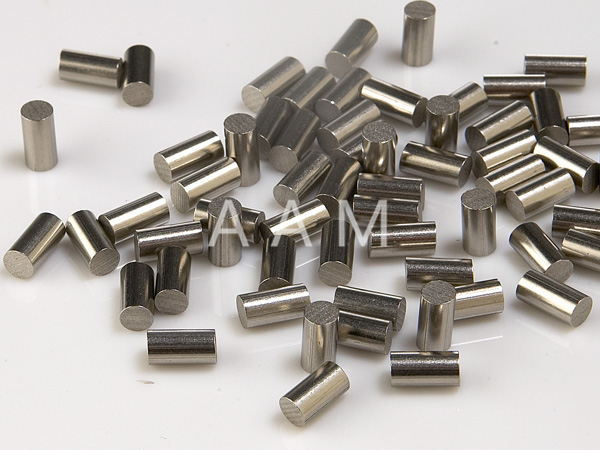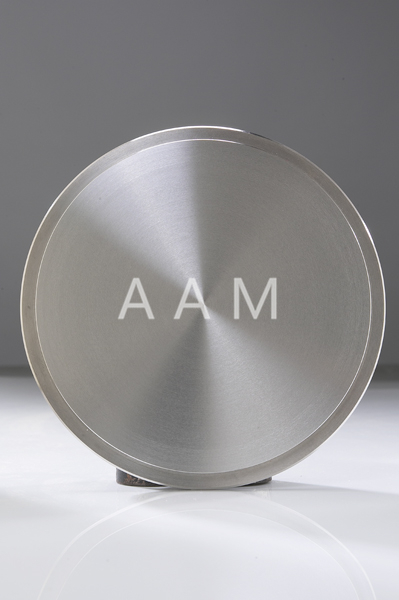What's the use of tungsten target
author: Baidu encyclopedia source: Baidu encyclopedia
Tungsten target is often used as sputtering target for physical vapor deposition. It is used in semiconductor field to fabricate gate electrode, connect wiring, diffusion barrier layer and so on. Tungsten target materials are mainly used in aerospace, rare earth smelting, electric light source, chemical equipment, medical equipment, metallurgical machinery, smelting equipment, petroleum, and other fields.
Among them, pure tungsten target material is mainly used as filler of through holes and vertical contact holes between metal layers, namely tungsten plug. Tungsten alloy targets, such as WSi2, are mainly used as polysilicide structures and local interconnection lines on the top of grid polysilicon. As the size of semiconductor chips becomes smaller and smaller, the reduction of copper interconnection leads to the increase of resistivity at nanoscale, which has become a technical bottleneck restricting the development of semiconductor industry. Studies have shown that refractory tungsten is expected to replace copper as the next generation of semiconductor wiring metal materials.
Characteristic
The tungsten target after spraying and sintering has the characteristics of 99% density or even higher, the average diameter of transparent texture is 100 um or less, oxygen content is 20 ppm or less, and the deflection angle is about 500 Mpa. The sintered tungsten target has a high density, a high level of transparent frame which can not be achieved by traditional compaction sintering method, and the deflection angular force is obviously improved, resulting in a significant reduction of particulate matter.
Physical property
Element symbol: W
Atomic number: 74
Stable isotopes and their occupied%:180 (0.14); 182 (26.41); 183 (14.40); 184 (30.64); 186 (28.41)
Relative atomic mass: 183.85
The electron layer structure of free atoms: 1s22s22p63s23p63d104s24p64d104f145s25P65d46S2
Atomic volume: 9.53 cm3/mol
Density: 19.35 g/cm3
Crystal structure and lattice constant: alpha -W: body centered cubic a=3.16524 nm (25 C)
Beta -W: cubic lattice a=5.046 nm (stabilized below 630 degrees Celsius)
Melting point: 3410 + 20 C
Boiling point: 5927 C
Latent heat of melting: 40.13 + 6.67kJ/mol
Sublimation heat: 847.8 kJ/mol (25 C)
Evaporation heat: 823.85 + 20.9kJ/mol (boiling point)
Resistance temperature coefficient: 0.00482 I/ C
Electron escape work: 4.55 eV
Thermal neutron capture surface: 19.2 B
Elastic modulus: 35000~38000 MPa (wire material)
Torsion modulus: 36000Mpa
Bulk modulus: 3.108 x 10 - 11 - 1. 5 7 9 x 107t+0.344 * 103t2 Pa
Shear modulus: 4.103 x 10 - 11 - 3. 8 9 x 107t+7.55 x 103t2 Pa
Compressibility: 2. 9 10 7 cm/kg
Tungsten has two variants, alpha and beta. Under normal temperature and normal pressure, the alpha type is a stable body centered cubic structure. Beta tungsten can only occur under aerobic conditions. It is stable below 630 C and converted to alpha tungsten above 630 C, and this process is irreversible.
Purity: tungsten 99.95% or more
Density: 19.35g/cm3
Surface condition: Polish or alkali wash.
Among them, pure tungsten target material is mainly used as filler of through holes and vertical contact holes between metal layers, namely tungsten plug. Tungsten alloy targets, such as WSi2, are mainly used as polysilicide structures and local interconnection lines on the top of grid polysilicon. As the size of semiconductor chips becomes smaller and smaller, the reduction of copper interconnection leads to the increase of resistivity at nanoscale, which has become a technical bottleneck restricting the development of semiconductor industry. Studies have shown that refractory tungsten is expected to replace copper as the next generation of semiconductor wiring metal materials.
Characteristic
The tungsten target after spraying and sintering has the characteristics of 99% density or even higher, the average diameter of transparent texture is 100 um or less, oxygen content is 20 ppm or less, and the deflection angle is about 500 Mpa. The sintered tungsten target has a high density, a high level of transparent frame which can not be achieved by traditional compaction sintering method, and the deflection angular force is obviously improved, resulting in a significant reduction of particulate matter.
Physical property
Element symbol: W
Atomic number: 74
Stable isotopes and their occupied%:180 (0.14); 182 (26.41); 183 (14.40); 184 (30.64); 186 (28.41)
Relative atomic mass: 183.85
The electron layer structure of free atoms: 1s22s22p63s23p63d104s24p64d104f145s25P65d46S2
Atomic volume: 9.53 cm3/mol
Density: 19.35 g/cm3
Crystal structure and lattice constant: alpha -W: body centered cubic a=3.16524 nm (25 C)
Beta -W: cubic lattice a=5.046 nm (stabilized below 630 degrees Celsius)
Melting point: 3410 + 20 C
Boiling point: 5927 C
Latent heat of melting: 40.13 + 6.67kJ/mol
Sublimation heat: 847.8 kJ/mol (25 C)
Evaporation heat: 823.85 + 20.9kJ/mol (boiling point)
Resistance temperature coefficient: 0.00482 I/ C
Electron escape work: 4.55 eV
Thermal neutron capture surface: 19.2 B
Elastic modulus: 35000~38000 MPa (wire material)
Torsion modulus: 36000Mpa
Bulk modulus: 3.108 x 10 - 11 - 1. 5 7 9 x 107t+0.344 * 103t2 Pa
Shear modulus: 4.103 x 10 - 11 - 3. 8 9 x 107t+7.55 x 103t2 Pa
Compressibility: 2. 9 10 7 cm/kg
Tungsten has two variants, alpha and beta. Under normal temperature and normal pressure, the alpha type is a stable body centered cubic structure. Beta tungsten can only occur under aerobic conditions. It is stable below 630 C and converted to alpha tungsten above 630 C, and this process is irreversible.
Purity: tungsten 99.95% or more
Density: 19.35g/cm3
Surface condition: Polish or alkali wash.






